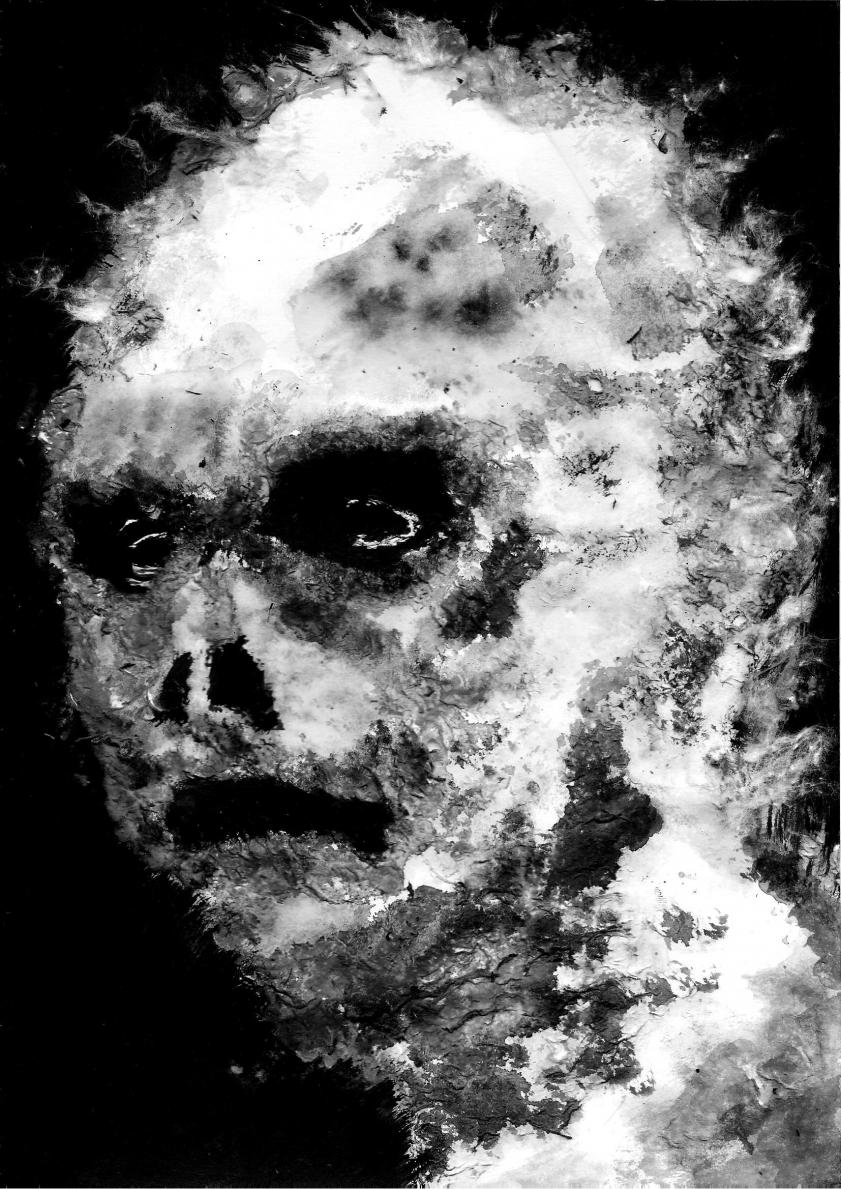Details
- 2012-12-16
- 0
- 81
- 2012
- Painting
- Ink
- Conceptual
Pricing
Price and availability not indicated

- FEAR IS A INCORPOREAL PARASITE -
Description by Mister 13
Ink, kleenex and cotton on cardboard, 1 coffee, 3 cigarettes. PLEASE LISTEN THE SONG watching the image The nose SUCKS. FULL VIEW for the details please!!!! Fear is an emotion induced by a perceived threat that causes animals to move quickly away from the location of the perceived threat, and sometimes hide. It is a basic survival mechanism occurring in response to a specific stimulus, such as pain or the threat of danger. In short, fear is the ability to recognize danger leading to an urge to confront it or flee from it (also known as the fight-or-flight response) but in extreme cases of fear (horror and terror) a freeze or paralysis response is possible. Some psychologists such as John B. Watson, Robert Plutchik, and Paul Ekman have suggested that there is only a small set of basic or innate emotions and that fear is one of them. This hypothesized set includes such emotions as joy, sadness, and anger. Fear should be distinguished from the emotion anxiety, which typically occurs without any certain or immediate external threat. Additionally, fear is frequently related to the specific behaviors of escape and avoidance, whereas anxiety is the result of threats which are perceived to be uncontrollable or unavoidable. It is worth noting that fear almost always relates to future events, such as worsening of a situation, or continuation of a situation that is unacceptable. Fear can also be an instant reaction to something presently happening. All people have an instinctual response to potential danger, which is in fact important to the survival of all species. The reactions elicited from fear are seen through advantages in evolution. Although fear is learned, the capacity to fear is part of human nature. Many studies have found that certain fears (animals, heights) are much more common than others ( flowers, clouds). These fears are also easier to induce in the laboratory. This phenomenon is known as preparedness. Because early humans that were quick to fear dangerous situations were more likely to survive and reproduce, preparedness is theorized to be a genetic effect that is the result of natural selection. From an evolutionary psychology perspective, different fears may be different adaptations that have been useful in our evolutionary past. They may have developed during different time periods. Some fears, such as fear of heights, may be common to all mammals and developed during the mesozoic period. Other fears, such as fear of snakes, may be common to all simians and developed during the cenozoic time period. Still others, such as fear of mice and insects, may be unique to humans and developed during the paleolithic and neolithic time periods (when mice and insects become important carriers of infectious diseases and harmful for crops and stored foods). Fear is high only if the observed risk and seriousness both are high and is low if one or the other of the seen risk or seriousness is low. The fear of the end and its existence is in other words the fear of death. The fear of death ritualized the lives of our ancestors. These rituals were designed to reduce that fear; they helped collect the cultural ideas that we now have in the present. These rituals also helped preserve the cultural ideas. The results and methods of human existence had been changing at the same time that social formation was changing. One can say that the formation of communities happened because people lived in fear. The result of this fear forced people to unite to fight dangers together rather than fight alone. If one were to look into religion, they would find that it is filled with different fears that humans have had throughout many centuries. The fears don’t just go on the metaphysical levels (including the problems of life and death) but move onto moral dimensions as well. Death was a boundary to people that is seen as a transition to another world. This world would always be different depending on how each individual lived their lives. The origin of this intangible fear comes from other sources that are not found in the present world. In a sense we can assume 'that fear was a big influence on things such as morality. Neuroscientists and psychologists are making breakthroughs in helping people overcome fear. Because fear is more complex than just forgetting or deleting memories, an active and successful approach involves a person repeatedly confronting their fears. By confronting their fears— in a safe manner— a person can suppress the fear-triggering memory or stimulus. Known as ‘exposure therapy’, this practice can help cure up to 90% of people, with specific phobias.







